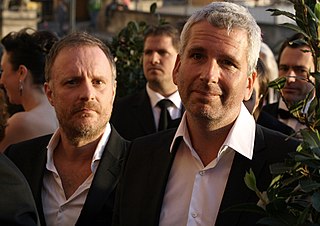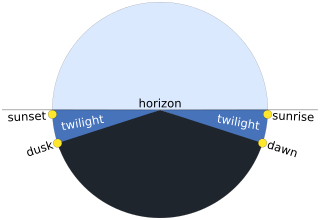The Dark Eye is a German role-playing game created by Ulrich Kiesow and launched by Schmidt Spiel & Freizeit GmbH and Droemer Knaur Verlag in 1984.

Ancient Anguish, abbreviated AA, is a fantasy-themed MUD, a text-based online role-playing game. Founded in 1991 by Balz "Zor" Meierhans and Olivier "Drake" Maquelin, it opened to the public on February 2, 1992. It is free-to-play, but has been supported by player donations since 1994.

Discworld MUD is a popular MUD, a text-based online role-playing game, set in the Discworld as depicted in the Discworld series of books by Terry Pratchett.
LPMud, abbreviated LP, is a family of MUD server software. Its first instance, the original LPMud game driver, was developed in 1989 by Lars Pensjö. LPMud was innovative in its separation of the MUD infrastructure into a virtual machine and a development framework written in the LPC programming language.

Genesis LPMud, a multi-player computer game, is the original LPMud founded in April 1989 by Lars Pensjö, now running on CD gamedriver and mudlib, and previously hosted by Chalmers Computer Society, though hosting has since been moved to a dedicated, private server. Medieval fantasy is the general theme. Roleplaying is expected.

The Burchardi flood was a storm tide that struck the North Sea coast of North Frisia and Dithmarschen on the night between 11 and 12 October 1634. Overrunning dikes, it shattered the coastline and caused thousands of deaths and catastrophic material damage. Much of the island of Strand washed away, forming the islands Nordstrand, Pellworm and several Halligen.
The Grail Movement is an organization which originated in Germany in the late 1940s, inspired by the work of the self-proclaimed Messiah Oskar Ernst Bernhardt, principally In the Light of Truth: The Grail Message. Abd-ru-shin did not establish the organization; the Movement as it exists today was formally organized by followers.

Ireen Sheer is a German-British pop singer. She had a top five hit on the German singles chart with "Goodbye Mama" in 1973. She went on to finish fourth at the Eurovision Song Contest 1974 representing Luxembourg, sixth at the Eurovision Song Contest 1978 representing Germany, and 13th for Luxembourg in 1985.
James Phillips is a German heavyweight kickboxer of African American descent, currently competing in K-1. He is former European muay thai champion and two time K-1 Croatia tournament champion. He is trained by Michael Damboer and fights out of Thai-Bombs Mannheim.

Flyff is a fantasy MMORPG by Korean development company Gala Lab.

Xyllomer is a MUD, a text-based online role-playing game, founded in 1991 as PaderMUD. It was the first publicly accessible MUD to use Dworkin's Game Driver. It has been hosted in Germany throughout its history.

The terpodion or uranion is a keyboard instrument which produces sound using the same friction principle as the glass harmonica.
Anneli Granget was a German stage and television actress.

Stermann & Grissemann are an Austrian/German comedy duo comprising Dirk Stermann and Christoph Grissemann.

Namibia is a multilingual country wherein German is recognised as a national language. While English has been the sole official language of the country since 1990, in many areas of the country, German enjoys official status at a community level.

Andreas Angelus was a German clergyman, teacher and government inspector, known for his chronicles of the history of the Margraviate of Brandenburg.
Zipser German is a Germanic dialect which developed in the Upper Zips region of what is now Slovakia among people who settled there from central Germany beginning in the 13th century. The Lower Zips was inhabited by other Central Germans who spoke a similar dialect called "Gründlerisch" which is considered to be the same language. Beginning in at least the 18th century, many Zipsers migrated to northern Romania, including to southern Bukovina, where several other Germanic dialects were also spoken. Over time, the speech of the Zipsers in Romania was heavily influenced by that of people from Upper Austria who settled among them and were ultimately assimilated into the Zipser ethnic community. During and after the Second World War, most Zipsers evacuated or were expelled to Germany, but a community of speakers remains in Hopgarten; their distinctive dialect is called "Outzäpsersch".

Polyestriol phosphate, sold under the brand names Gynäsan, Klimadurin, and Triodurin, is an estrogen medication which was previously used in menopausal hormone therapy in Germany but is now no longer available. Its effects on the vagina, uterus, pregnancy, prostate gland, coagulation, and fibrinolysis, as well as on mammary and endometrial cancer risk, have been studied. PE3P has been used at dosages of 40 to 80 mg per month by intramuscular injection. A single 50 mg injection of PE3P has a duration of approximately one month and a single 80 mg injection has a duration of approximately two months. PE3P is similar to polyestradiol phosphate and is, likewise, an estrogen ester – specifically, an ester and prodrug of estriol – in the form of a polymer with phosphate linkers. When adjusted for differences in molecular weight, it contains the equivalent of about 80% of the amount of estriol. The medication was developed and marketed by the Swedish pharmaceutical company Leo Läkemedel AB.

Estriol phosphate (E3P), or estriol 17β-phosphate, also known as estra-1,3,5(10)-triene-3,16α,17β-triol 17β-(dihydrogen phosphate), is an estrogen which was never marketed. It is an estrogen ester, specifically an ester of estriol with phosphoric acid, and acts as a prodrug of estriol by cleavage via phosphatase enzymes in the body. Estriol phosphate is contained within the chemical structure of polyestriol phosphate, and this medication has been marketed for medical use.

















